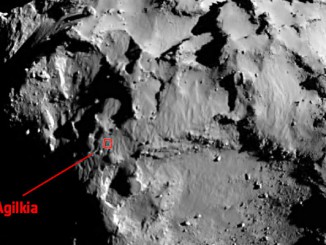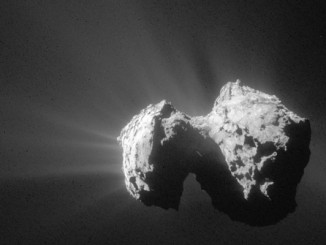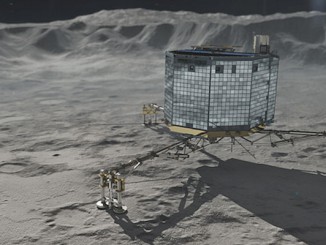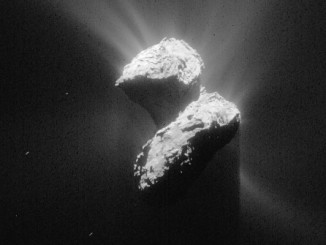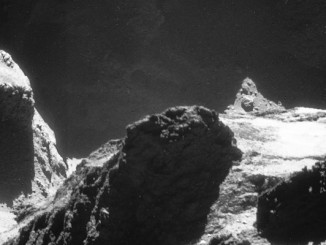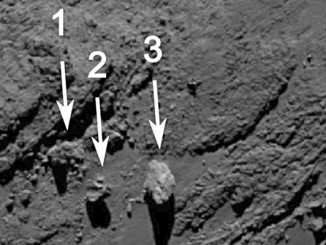
Rosetta studies Comet 67P at perihelion
ESA’s Rosetta spacecraft has witnessed 67P/Churyumov–Gerasimenko make its closest approach to the Sun (perihelion) at 3:03am BST on 13 August, when the comet came within 116 million miles of our nearest star. Rosetta’s measurements suggest the comet is currently spewing up to 300kg of water vapour and a metric tonne of dust every second, creating dangerous working conditions for the spacecraft.


